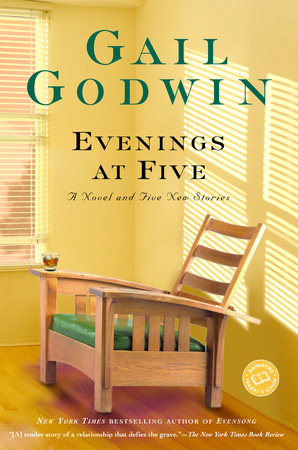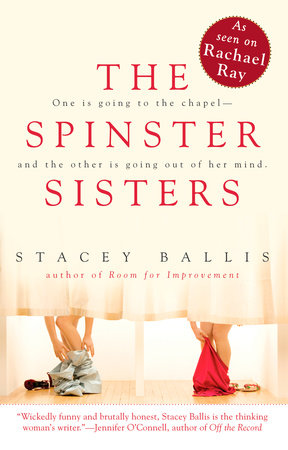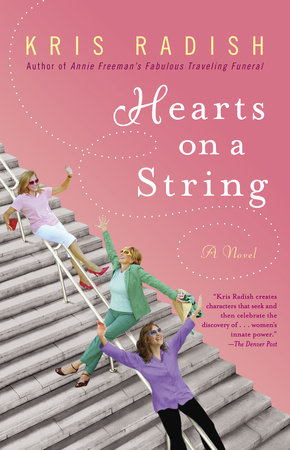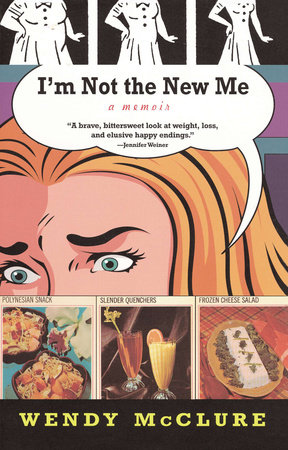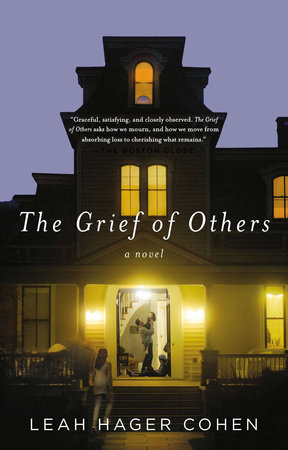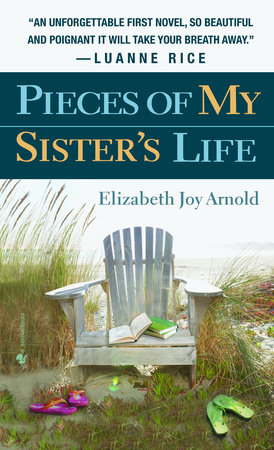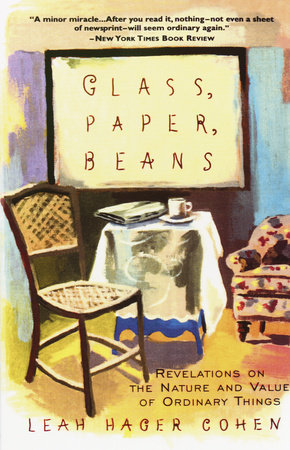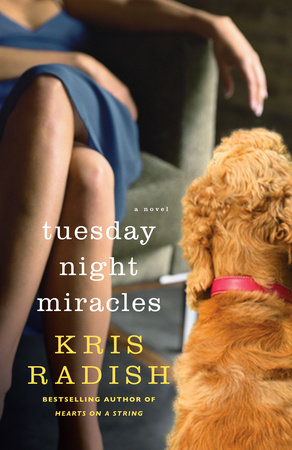A Conversation with Gail Godwin
ROB NEUFELD
Rob Neufeld is the book reviewer for the Asheville
Citizen-Times and director of the program “Together
We Read” in North Carolina. At present, he is editing
volume one of Gail Godwin’s diaries.
Rob Neufeld: In Evenings at Five, as Christina begins
to commune with Rudy after his death, she
imagines how other authors would write a ghost
story about the experience. Then you write,
“But this was Christina’s story, and if she forced
or .nessed anything, she might miss the secret
with her name on it.” The spirit world is an easy
sell for some, a hard sell for others. What are
your thoughts about it?
Gail Godwin: My feelings about the spirit world
are stronger than ever. I don’t expect to see any
ghosts of loved ones, but they do leave a vibrato.
There’s the time when Christina gets a condolence
letter from someone who says that loving
someone after he has died is stronger because
there’s less interference. The static of what that
person needs from you, what you need from
him, isn’t there. I wish I could write a ghost
story. Very few satisfy me, and I know there’s a
possibility I could be satisfied.
RN: Many stories about women visited by
ghosts are sad because the women can’t overcome
their grief and ultimately lose their preference
for reality. Christina .nds a different
path. Is she a hero?
GG: She is—in that she keeps on living her life
in the sense of the quest. The event has made
her stronger through her knowledge about her
love and her knowledge that she is lovable. I
can’t think of a novel that portrays a positive relationship
with a ghost. Oh, I can think of
one—The Ghost and Mrs. Muir. It’s corny, but it
qualifies for what a ghost story should be.
RN: What makes a good ghost story?
GG: It can’t have any hokey hauntings or appearances.
It has to grow out of the living person’s
history, perceptions, and needs. It can’t be
in.icted on them. The ghost has to have lived
with them for a long time.
RN: How does the ghost manifest itself ?
GG: It can go several ways. This leftover life
that refuses to die can inhabit the person and use
the living person as an instrument. It still doesn’t
mean that an exterior thing has been planted in
them. It comes out of the living person’s needs
and fears. In The Ghost and Mrs. Muir, Mrs. Muir
arrives at a house as a widow. A big temptation
for a widow is to lose her preference for reality.
What the attractive ghost does is get her back
into living life fully—smelling the sea. The saddest
thing in the story is when the ghost talks
about the relationship they could have had if he
had been alive. D. H. Lawrence has a story—
“The Borderline”—about a widow on a journey
to meet her lover. Her dead husband ruins
the whole thing. He’s allowed to do so because
she has incorporated certain powerful qualities
of his. She grows increasingly powerful, and her
new lover can’t bear it.
RN: At the start of Evenings at Five, the reader
finds himself dropped into a domestic scene already
in progress. What is your relationship with
readers? How do you lure them into your stories?
GG: This book didn’t start off by my trying to
lure any readers. I just wanted to sit there in my
house every night around .ve o’clock, listen to
all the sounds, and evoke the cocktail hour. After
five pages, I had “tricked” myself into a new
way of writing. It was a tempo, and I couldn’t
go wrong.
RN: This gets us to talking about music. You
compare Evenings at Five to a sonata. Could you
elaborate on that?
GG: A sonata has a certain form—a theme that’s
stated, then a companion theme. The two themes
have a relationship. The sonata is resolved by moving
or transforming into something that comes out
of the materials, and yet is new. When Christina
sits down in Rudy’s chair and decides to drink a
glass of red wine, she remembers how the priest
had come to console her. She had asked him,
“Where should I sit?” He said sit where you want,
and she sits in Rudy’s chair. Then, at the same
time, she imagines herself on the sofa looking at
Rudy. She imagines his personality and then she is
able to be both herself and Rudy at once and then
to be the life that was made by the two of them.
RN: Previous novels of yours involved religious
thought. Are you trying to create a religion
that not only works for you but also for the
modern world?
GG: You said that I’ve been on a decades-long
search for a powerful and centering spirit. I am.
I go to church because it connects me with the
beginning of my search at St. Mary’s [Episcopal
Church in Asheville]. Tom Miller, the priest at
St. Gregory’s in Woodstock, said, “We might as
well learn to accept our inseparability from
God.” One contains a relationship between oneself
and this Other—this powerful, centering
spirit. I just live with it; there’s no theorizing.
There’s just working at that relationship.
RN: In Evenings at Five, you say that Christina
felt Rudy’s presence more strongly once he was
absent. One can then believe that with death,
the sense of presence becomes everlasting.
That’s the kind of religious thought a scientific
person can grasp. And then when the priest visits
Christina, what does he say?
GG: He visits with a parishioner and he says
the burial of.ce: “Hope that is seen is not hope.
Why hope for what is already seen?”
RN: Another good religious thought for a rationally
minded person.
GG: There are some other good ones in Evensong
[Godwin’s previous novel].
RN: You know Paul Valéry’s saying, “God
made everything out of nothing. But the
nothingness shows through.” Do you agree
with this?
GG: Something else shows through when you
get to the bottom of nothingness. It’s like a
piece of black cheesecloth. There’s a glow below
it. This would make a good painting. You
know, I find so much out about my characters
by drawing them. [Some of Gail’s artwork can
be seen at www.gailgodwin.com.]
RN: At the end of “Old Lovegood Girls,”
Christina, having donated money to her alma
mater, says, “I . . . like the idea of some girl like
myself . . . knowing she may dream and study
and play the innocent ingénue a little longer.”
Could you tell us a little more about being an
ingénue?
GG: The ingénue is the girl who has all her options
open. She’s taken care of by others. There’s
time to play, to read and study, to learn things.
RN: Regarding your re.ections on childhood,
to what extent do you identify with the ingénue?
GG: I suddenly have the horrible feeling I’ve
never been an ingénue. I had a dream when I was
five or six—I was on a front lawn of a house and
a mammy was bathing a blond-haired boy. I crept
up to the boy and said, “Splash her.” He does—
and she comes crawling after me. I’ve always been
an instigator. I’ve never been an ingénue. I don’t
think I was ever innocent. The first time I went
to Sunday school, I came home and said I had
pushed a little boy down the stairs. My mother
called the church. She was told that no little boy
had been pushed down the stairs.
RN: In what ways is it different applying your
fiction writing to your own life rather than to
invented characters? Are there special risks and
special rewards?
GG: First, when I think I’m writing a memoir,
I use fictional ploys and shapings, slipping in a .ction
here and there. When I’m writing about
other people, I’m writing about my internal cast
of characters. In memoirs and in fiction, I will do
anything to get to the quickening moment.
RN: The Christina stories are particularly candid
and personal. In “Mother and Daughter
Ghosts, A Memoir,” you tell about your last time
together with your mother before she died, when
you felt threatened by her at a spirituality conference.
You both had responded to an exercise by
which you had to imagine yourselves meeting the
king and queen of your psyches. In your mother’s
scenario, she was the heroine admired by the
queen. In yours, you were snubbed by the queen.
GG: It’s so funny and so horrible. I spent the
last hours before my fight on my mother’s
porch, writing my criticisms of the conference,
when I could have been spending precious time
with her.
RN: That story stands as the only experience
with your mother in the book, whereas in real
life, you had many, including ones that celebrate
the joy you both felt—well, the joy you share at
the beginning of the “Mother and Daughter
Ghosts” story. Do you sometimes make yourself
laugh when you’re writing?
GG: Something will happen in a scene, and I’ll
giggle. My humor surprises me. I don’t plan it.
RN: In chapter 5 of Evenings at Five, after
Christina returns home from the doctor following
her scary blindness episode, she takes down
Rudy’s and her “brown-at-the-edges” cartoon of
a woman saying to her snuggly mate, “I love these
quiet evenings at home battling alcoholism.” Next
she disposes of all Rudy’s medications, and recalls
the party they attended shortly before his death
when Rudy, feeling time-pressured and exasperated
with small talk about cabbages and Brussels
sprouts, booms in his loud bass voice: “An outstanding
cabbage would be a welcome addition to
this gathering.” The humor is necessary to lighten
the pain, isn’t it? If you go a distance in your story
without humor, do you sense that?
GG: Often during the course of remembering,
you bump back and forth between painful and
humorous material. Christina has been shaken by
her doctor’s term blotto, and comforts herself with
Gil Mallow’s recent remark that she and Rudy
made a “formidable” couple, a description she
prefers to “blotto.” Thinking of the Mallows leads
her into the funny-awful memory of the dinner
party where they met. Whenever I read that dinner
party passage aloud, people burst out laughing
and so do I. Yet at the time, Christina (and I!) suffered
agonies and was furious. But now, with
Rudy gone, she misses the individual force of his
awful moment, and she has this great insight that
comforted me as I was writing the passage. I
quote from the book: “But now the absence of
that force she could never quite modify or control
has left an excavation in her life that cried out to
be filled with his most awful moments.”
RN: A nightmare has a powerful effect on
Christina in Evenings at Five. Dreams populate
your fiction and daydreams constantly mix in.
Might we consider you an advocate of the
dream world?
GG: Jungian analysis is an ongoing graduate
course for me about the one-third of my life
when I’m asleep. I could index the figures, settings,
and cross-references. My dreams are defi-
nitely a commentary on what my unconscious is
trying to tell me—what’s being neglected and
what’s being falsified.
RN: Do bad guys have bad dreams?
GG: Your dreams point to things you need to
pay attention to: “Hey, Macbeth, that forest is
moving toward your castle.”
RN: In your preface, you say you envisioned
stories that would pounce on “those places in
Christina’s journey that mark a turning point for
her.” Two stories portray experiences that preceded
the deaths of your parents; and two other
stories, those of your priest and of Robert. How
central a concern is it to you to come up with an
answer to death?
GG: I’m not trying to come up with an answer
to death. I’m trying to engage with death.
Death is not an enemy at all; it’s a room I haven’t
been allowed into yet. The barriers may open
into unexpected landscapes.
RN: Do you plan on adding Christina stories
to future editions of Evenings at Five?
GG: This is by no means a finished product. I
have other Christina stories. Eventually, Evenings
at Five will stand by itself again. When my editor
had called me to say that Evenings at Five would
be coming out in paperback and would look
thin, she asked, “Do you have anything else?” I
sent her the Christina stories I had. When I add
new Christina stories, the whole new book will
be called The Passion of Christina and will have
stories that go from childhood to old age—about
twenty-five stories.
